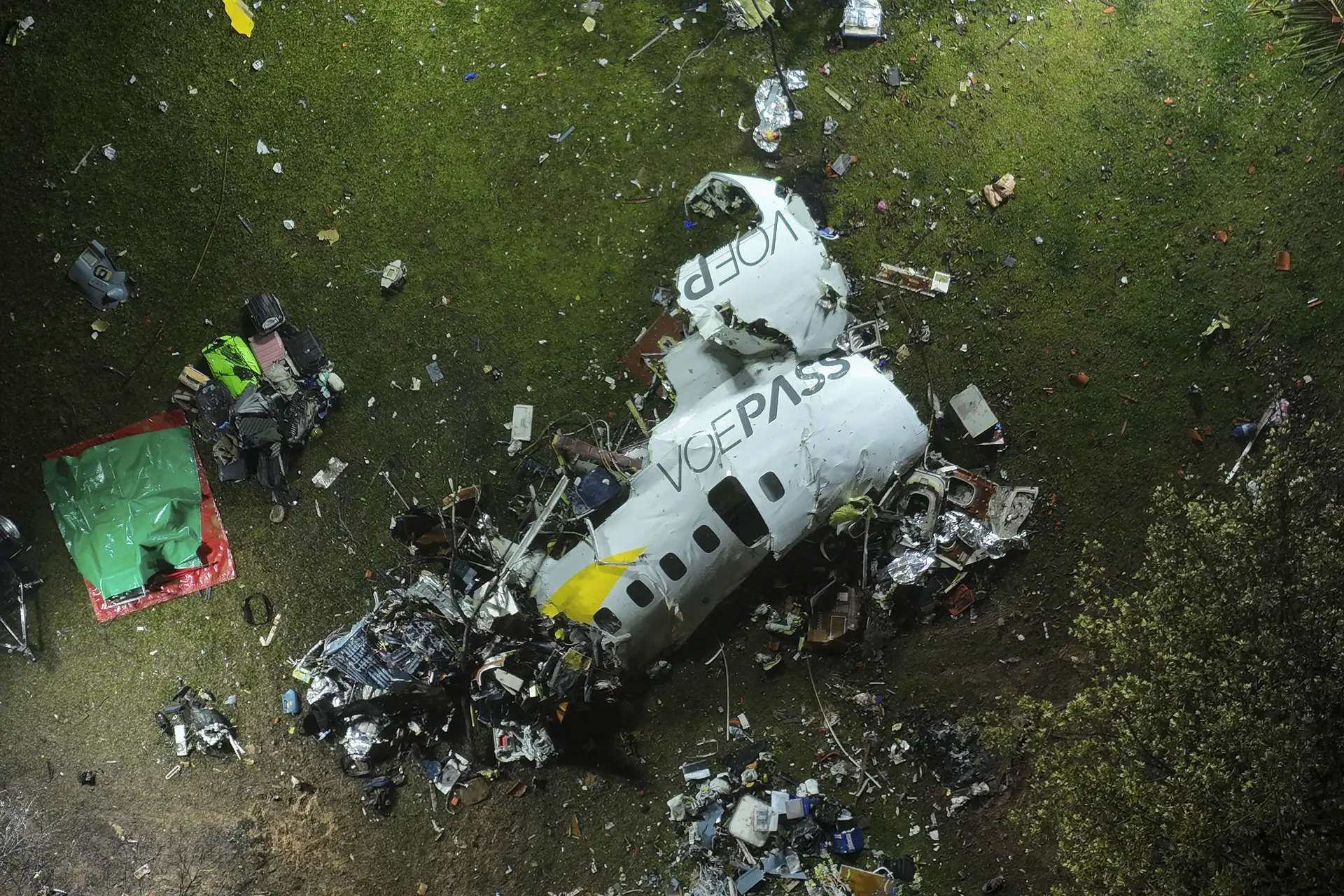An ATR-72 turboprop operated by regional carrier Voepass crashed in a residential area near Sao Paulo on Friday, resulting in the deaths of all 62 passengers. The aircraft was en route from Cascavel to Sao Paulo when it went down around 1:30 pm local time in Vinhedo, roughly 80 km (50 miles) northwest of the city.
Preliminary investigation and black box recovery
Brazil’s aviation accident investigation center, Cenipa, has recovered the plane’s black box, which includes crucial voice recordings and flight data.A preliminary report is expected within 30 days, according to Cenipa’s head. The aircraft reportedly lost radar contact at 1:22 pm after failing to respond to communication attempts, with no emergency signals sent by the crew.
Crash circumstances
Witness videos show clear skies before the plane began a spiraling descent. Experts are now scrutinizing several factors to determine the cause of the crash.
Potential causes and expert opinions
Weather conditions:
US aviation safety expert Anthony Brickhouse noted that investigators will examine the weather conditions and the aircraft’s engine and control systems. Preliminary analyses suggest ice buildup could have played a role. Voepass had predicted ice at the altitude where the plane was flying, though it was expected to be manageable. Brazilian aviation engineer Celso Faria de Souza is inclined to believe ice was a significant factor based on video evidence. ATR-72 planes have had past issues with icing, including a fatal 1994 crash in Indiana and a 2016 incident in Norway.
Engine failure:
MIT professor John Hansman reviewed footage of the crash and suggested that engine failure, rather than weather, might be to blame. He proposed that a malfunction on one side of the engine could have led to the plane’s downward rotation if not properly managed by the crew.
Multiple factors:
Robert A Clifford, an attorney who has handled similar cases, pointed out that air crashes often result from a combination of factors, including ice, engine failure, and human error.
As the investigation continues, authorities and experts will work to piece together the exact circumstances leading to this tragic event.
Preliminary investigation and black box recovery
Brazil’s aviation accident investigation center, Cenipa, has recovered the plane’s black box, which includes crucial voice recordings and flight data.A preliminary report is expected within 30 days, according to Cenipa’s head. The aircraft reportedly lost radar contact at 1:22 pm after failing to respond to communication attempts, with no emergency signals sent by the crew.
Crash circumstances
Witness videos show clear skies before the plane began a spiraling descent. Experts are now scrutinizing several factors to determine the cause of the crash.
Potential causes and expert opinions
Weather conditions:
US aviation safety expert Anthony Brickhouse noted that investigators will examine the weather conditions and the aircraft’s engine and control systems. Preliminary analyses suggest ice buildup could have played a role. Voepass had predicted ice at the altitude where the plane was flying, though it was expected to be manageable. Brazilian aviation engineer Celso Faria de Souza is inclined to believe ice was a significant factor based on video evidence. ATR-72 planes have had past issues with icing, including a fatal 1994 crash in Indiana and a 2016 incident in Norway.
Engine failure:
MIT professor John Hansman reviewed footage of the crash and suggested that engine failure, rather than weather, might be to blame. He proposed that a malfunction on one side of the engine could have led to the plane’s downward rotation if not properly managed by the crew.
Multiple factors:
Robert A Clifford, an attorney who has handled similar cases, pointed out that air crashes often result from a combination of factors, including ice, engine failure, and human error.
As the investigation continues, authorities and experts will work to piece together the exact circumstances leading to this tragic event.
Source : Times of India






